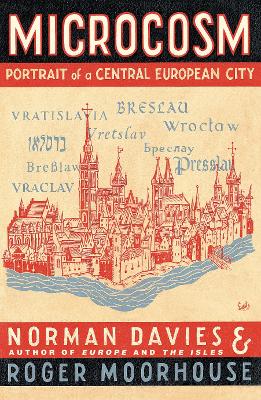The story of Central Europe is anything but simple. As the region located between East and West, it has always been endowed with a rich variety of migrants, and has repeatedly been the scene of nomadic invasions, mixed settlements and military conquests. In order to present a portrait of Central Europe, Norman Davies and Roger Moorhouse have made a case study of one of its most colourful cities, the former German Breslau, which became the Polish Wroclaw after the Second World War.
The traditional capital of the province of Silesia rose to prominence a thousand years ago as a trading centre and bishopric in Piast Poland. It became the second city of the kingdom of Bohemia, a major municipality of the Habsburg lands, and then a Residenzstadt of the kingdom of Prussia. The third largest city of nineteenth-century Germany, its population reached one million before the bitter siege by the Soviet Army in 1945 wrought almost total destruction. Since then Wroclaw has risen from the ruins of war and is once again a thriving regional centre.
The history of Silesia's main city is more than a fascinating tale in its own right. It embodies all the experiences which have made Central Europe what it is - a rich mixture of nationalities and cultures; the scene of German settlement and of the reflux of the Slavs; a Jewish presence of exceptional distinction; a turbulent succession of imperial rulers; and the shattering exposure to both Nazis and Stalinists. In short, it is a Central European microcosm.
- ISBN10 144811408X
- ISBN13 9781448114085
- Publish Date 31 December 2011 (first published 6 February 2003)
- Publish Status Active
- Publish Country GB
- Publisher Vintage Publishing
- Imprint Vintage Digital
- Format eBook (EPUB)
- Pages 640
- Language English
